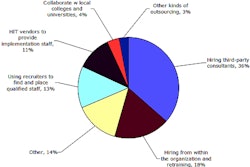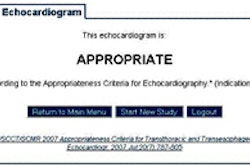The application monitors the time to produce and deliver a chest x-ray from the moment it is ordered through report delivery.
Radiologists at the University of Maryland Medical Center in Baltimore developed the software application to ensure that they would achieve the rapid turnaround times needed for the hospital to achieve a Joint Commission pneumonia time-to-antibiotic core measure PN-5C. This core measure of the Joint Commission requires that patients diagnosed with pneumonia receive antibiotics within six hours of admission to a hospital.
When an order for a posteroanterior/lateral chest x-ray exam is placed by the emergency department, a special order code -- "chest radiograph suspected pneumonia" -- is added to the order as a "pneumonia modifier" in the RIS. This serves both as an alert to interpreting radiologists and also enables the time-to-completion data to be analyzed.
"When we first implemented the system, our initial data demonstrated that 23% of the studies were taking more than one hour before we notified the clinical emergency staff of the outcome," said Cuong Nguyen, MD. The primary reason for this was that the software initially created a pink slip of paper that accompanied the patient to the radiology department. It was the responsibility of the radiologic technologist to enter a pneumonia modifier into the RIS. Slip-ups occurred when a patient did not arrive with a pink slip, or the technologist forgot to add the modifier.
The initial data analysis evaluated 52 studies performed in a 90-day period. Forty percent had read times from study completion to final read of less than 30 minutes, and 37% were reported within 60 minutes. Nine studies with critical findings were identified, three of which took more than 30 minutes to report.
Analysis is ongoing to measure performance improvements that are expected from the automation of the "pink slip" process.



















